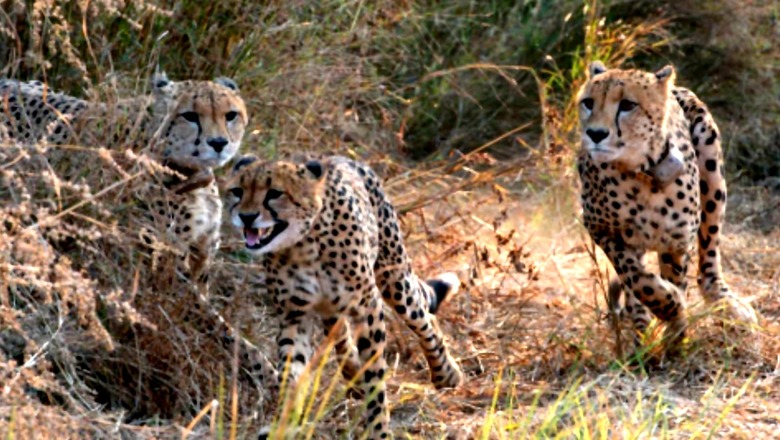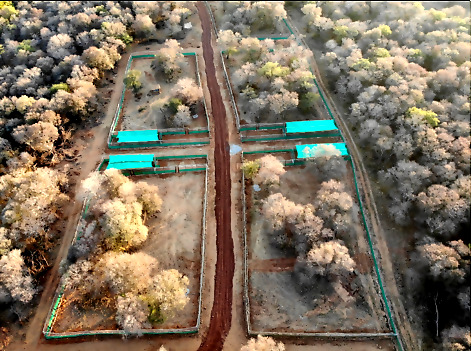
views
Six months after the historic translocation of eight cheetahs from Namibia, India is all set to welcome 12 more cats from South Africa this Saturday. Air Force’s large military transport aircraft Boeing C17 Globemaster will bring the 12 cats from Johannesburg to Gwalior on the morning of February 18.
The animals will then undertake the four-hours journey in helicopters from Gwalior to Kuno. Post landing, they will be shifted to the 10 quarantine Bomas (enclosures) that have already been built at the national park.
“The same protocol will be followed as was done last year. The cats will be quarantined separately for a month, and then be shifted to slightly larger enclosures. If all goes well, they will eventually be released into the wild,” said DG Wildlife SP Yadav. “There are seven males and five females from Phinda and Rooiberg Reserves in South Africa.”
The plan is part of India’s ambitious project to establish a self-sustaining, stable population of cheetahs in India. As part of the MoU, South Africa has agreed to send as many as 10 to 12 cheetahs every year for the next few years to help India realise its big dream, depending on the requirement.
With its current prey base of 37 prey per square km, Kuno National Park can sustain up to 20 cheetahs, but according to the government, the number can go up to 40 with more restoration measures.
The new batch will, however, be kept separately from the first batch of eight Namibian cheetahs, who have now been moved to a bigger fenced area of almost 6 sq km which has prey, but no competing carnivore. According to the ministry, the cats are doing well, and have even formed coalitions which is considered to be a healthy sign of adapting to the new environment.

“All the cats have been doing well, and showing increasing signs of normal behaviour. They are making a kill every 3-4 days, and our monitoring teams are keeping a close watch on them,” assured Yadav.
But, India will wait for a couple of months before releasing the eight Namibian cheetahs into the wild. “We want to be cautious, and let the cats take some time to acclimatise well to the environment.”

According to the officials, the female cat, Sasha, who narrowly survived after a renal complication, is now recovering. “She was an orphan, who was rescued by Cheetah Conservation Fund, and was also operated upon before she was brought to India. Her creatinine levels had dropped, but is now recovering,” said Yadav.
Meanwhile, security has been raised at Kuno, with satellite tracking, dog and drone squad and intensive patrolling on the ground. A mobile medical unit, too, has been established with three veterinarians for round the clock service.

An Eco-Sensitive Zone Masterplan is also in the pipeline for the National Park, along with a Cheetah Conservation Foundation which will specifically look into the conservation of the cats.
Read all the Latest India News here


















Comments
0 comment